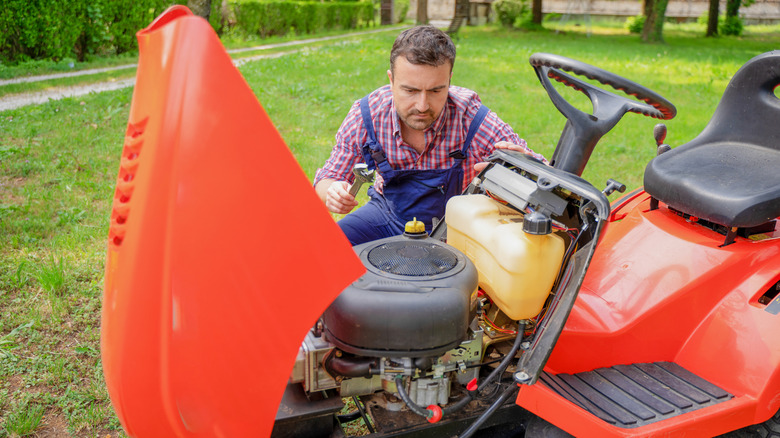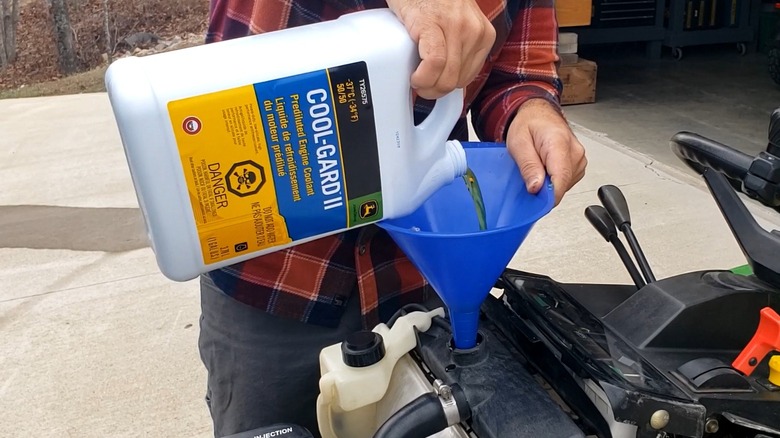How To Easily Clean The Cooling System Of Your Lawn Mower
You probably know that there are multiple lawn mower maintenance tasks you should be doing regularly to keep your gas-powered machine in the best possible working condition. You'll want to clean the deck and sharpen the blades to ensure excellent cutting results. You also need to perform some engine maintenance tasks to protect this key component from premature breakdowns or unnecessary wear and tear.
Part of safely cleaning your lawn mower the right way involves working on the cooling system. Although larger commercial mowers may use a liquid-cooling system, similar to a motor vehicle with a radiator and a water pump, most residential mowers use an air-cooling system. It isn't as effective as a water-cooled system, but it's effective enough without adding complexity and weight to the engine's design. With either design, you will need to perform some maintenance tasks to keep the system running efficiently.
If you fail to clean and maintain the cooling system on your lawn mower, the motor could overheat. It might even explain why your lawn mower is smoking as it's operating. You could see signs like a burning odor during operation, reduced power from the engine, or the engine sputtering to a stop while you're mowing the lawn. If the overheating problem continues, some of the motor's metal and plastic parts can warp or crack. Gaskets may begin to fail, leading to leaks in the motor. Learn how to clean your lawn mower's cooling system the right way to ensure it works as intended.
Cleaning an air-cooled lawn mower the right way
An air-cooled mower system is easier to manage than a liquid-cooled system, but it still requires regular maintenance. In this system, metal cooling fins serve to dissipate heat. These are rigid plates that are near the spark plug. They may accumulate dust and grass clippings during normal mower operation, and these blockages cause heat to remain trapped inside the engine housing.
Allow the engine to completely cool before trying to clean these fins. You might need to remove the engine's plastic cover before using a brush or an air compressor to remove debris from the fins. You should clean debris regularly after mowing, especially if conditions are dusty.
You should perform a couple of other maintenance steps not directly related to the air-cooling system. Change or clean the air filter when it's clogged with dirt or other debris. When the air filter is dirty and restricts the flow of air, the engine has to work harder, which can lead to overheating issues. Clean this filter or replace it (if it's showing damage) after roughly every 25 hours of mowing or at least once a year. You should also maintain the proper level of engine oil and keep the oil clean. Oil lubricates the engine, allowing it to run with less friction that could drive up the temperature. Oil absorbs heat and carries it away from the engine, too. You should change the oil every 50 hours of use.
Steps to clean a liquid-cooled lawn mower engine
If your lawn mower has a liquid-cooled engine, it will have a radiator, which serves as a container for the liquid coolant, allowing the coolant to transfer the heat it absorbs from the engine to the exterior air. The exterior of the radiator has fins. As air moves across the fins, the air draws the heat away from the coolant. The water pump then circulates the liquid through hoses back into the engine, allowing it to absorb more heat.
To clean this system, remove any debris from the air intake screen and radiator fins with a brush or air compressor. To flush the liquid-cooling system, make sure the engine is not hot. Remove the drain plug and capture the coolant in a safe container. Add a cleaning solution that your mower's manufacturer recommends and run the engine as directed. Drain the cleaning liquid immediately to remove debris. Add fresh liquid to the radiator at the proper level, sticking with a manufacturer-approved product.
While cleaning the liquid-cooling system in your lawn mower's engine, you should inspect it for damage. Check for leaks or blockages. If the system is low on liquid, you should top it off according to the mower's manufacturer's specifications. Pay attention to the performance of the thermostat, too, as a broken thermostat can fail to regulate the engine's temperature, leading to overheating problems. Additionally, clean the air filter and oil as part of the performing regular maintenance with the liquid-cooling system and engine, and it should last twice as long as an air-cooled engine.


